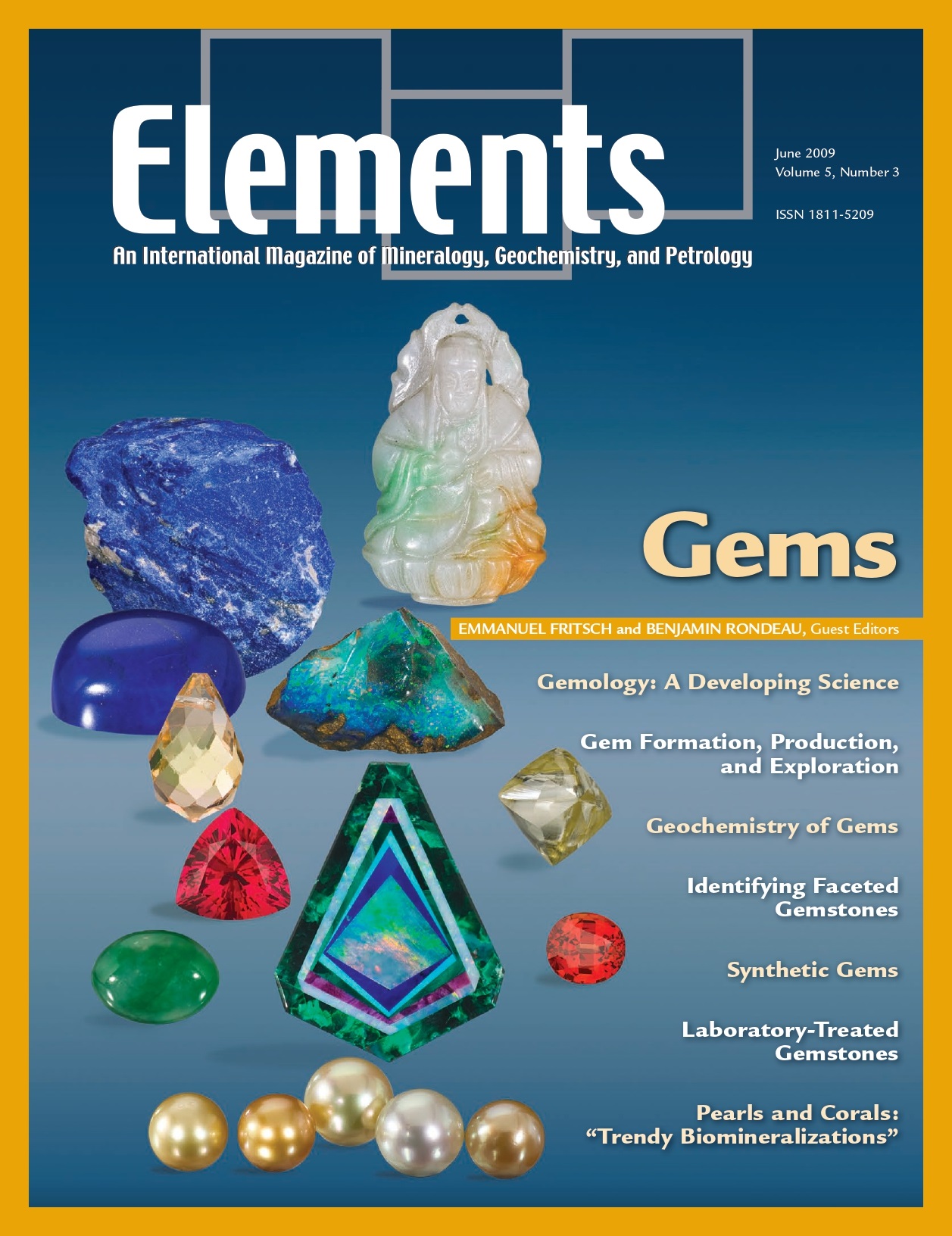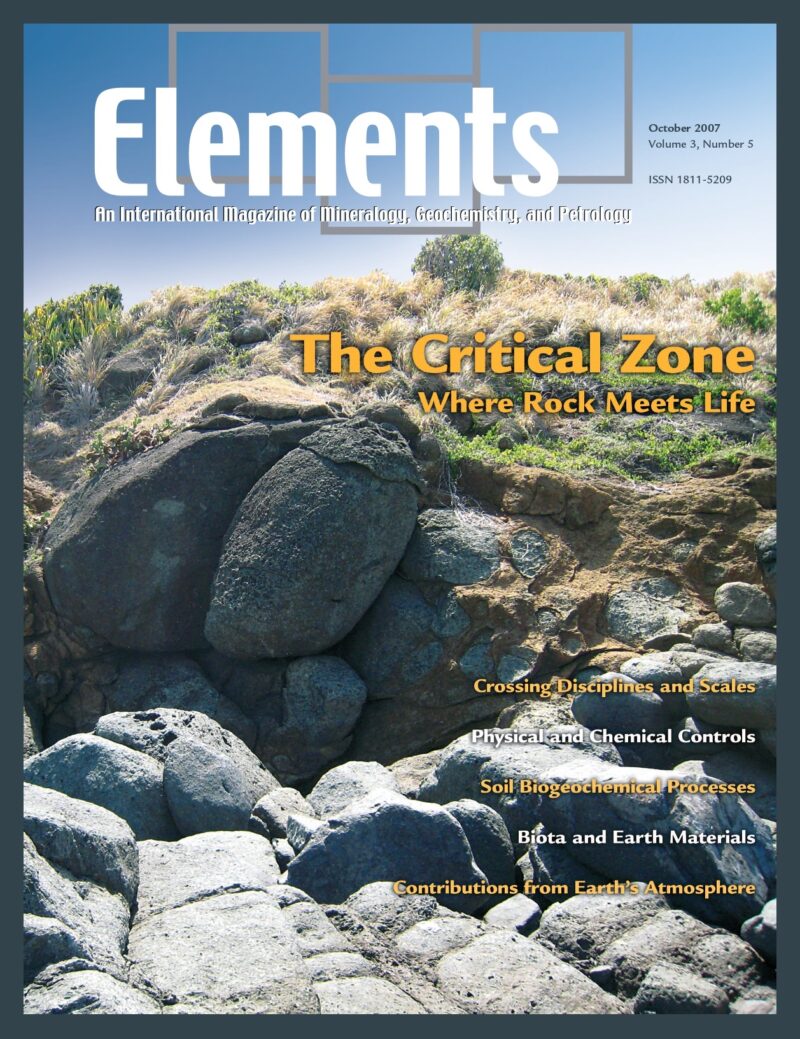
Bentonites – Versatile Clays, April 2009, Vol. 5, No. 2
June 28, 2024
Cosmochemistry, February 2011, Vol. 7, No. 1
June 28, 2024Gems, June 2009, Vol. 5, No. 3
$20.00
Most gems are natural minerals, which, although scarce and small, have a major impact on society. Their value is directly related to proper identification.
Gems
June 2009, Vol. 5, No. 3
Most gems are natural minerals, which, although scarce and small, have a major impact on society. Their value is directly related to proper identification. The determination of the species is key, of course, and must be done non-destructively. This is where classical tools of mineralogy come into play. However, other issues are paramount: Has this gem been treated? Is it natural or was it grown in a laboratory? For certain varieties, being able to tell the geographical provenance may enhance value considerably. These issues necessitate cross-linking the formation of gems with their trace-element chemistry. These unusual mineralogical and geochemical challenges make the specificity of gemology, a new and growing science, one of the possible futures of mineralogy.
Why You’ll Love Elements Magazine:
- Expert Contributors: Articles written by renowned researchers in the field of geoscience.
- Engaging Content: Join a community of readers who are passionate about Elements.
- Exceptional Quality: Each issue is printed on high-quality paper with stunning visuals and detailed illustrations that bring complex scientific concepts to life.
Order your copy of the June 2009 issue of Elements magazine today and uncover the beauty of gems.
Related products
-
The Critical Zone, October 2007, Vol. 3, No. 5
$20.00The Critical Zone (CZ) encompasses all fluid, mineral, gaseous, and biotic components from the outer envelope of vegetation down to the lower limit of groundwater. It supports much of life on Earth.
-
Medical Mineralogy And Geochemistry, December 2007, Vol. 3, No. 6
$20.00Medical mineralogy and geochemistry is an emergent, highly interdisciplinary field concerned with both normal and pathological interactions between minerals or amorphous inorganic solids and biomolecules or cells within the human body, and the transport and fate of prions and protein toxins in the soil environment. Prior research has, appropriately, focused on the complex genetic and molecular biological aspects, but there is a growing recognition of the vital need for understanding the surface and bulk properties and reactivities, especially at the challenging nanoscale characteristic of biomacromolecules and biominerals.
-
Water On Mars, June 2006, Vol. 2, No. 3
$20.00During the past several decades, spacecraft data have transformed the planets from astronomical objects into geologic worlds. Mars is the current focus of planetary exploration, and NASA’s objectives for this effort are based on the theme, “follow the water.




